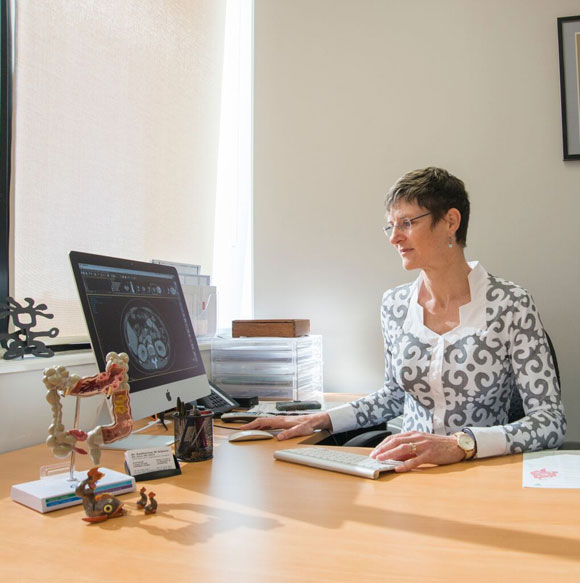What is a pilonidal sinus?
Pilonidal means ‘nest of hair’ and sinus refers to a cavity or tunnel. A pilonidal sinus occurs when hairs get stuck in the skin between the buttocks (the natal cleft), where they cause a reaction that creates a tunnel.
There is often a chronic discharge and the sinus may become infected, leading to a painful abscess.
Pilonidal sinuses are more common in young men.
What are the symptoms of a pilonidal sinus?
A pilonidal sinus doesn’t usually cause any symptoms unless it becomes infected.
When symptoms do develop, they can be acute or chronic.
Acute symptoms
You may experience increasing pain and swelling over a few days as pus accumulates in and around the sinus (i.e. an abscess forms).
Chronic symptoms
Almost half the people with pilonidal sinus have recurrent problems. This happens when the sinus becomes infected and swollen but discharges some pus, which relieves the pressure and some of the pain. Because the infection isn’t cleared completely, the pain and swelling recur.

What causes a pilonidal sinus?
Generally, a pilonidal sinus is caused by hair in the natal cleft. Broken hairs are driven into the skin by the rolling action of the buttocks. Once in the skin, the hairs cause a foreign body-type reaction, which leads to development of a sinus.
The risk of pilonidal problems may depend on:
- hair type
- the force with which hairs are pushed into the natal cleft
- the health of the skin of the natal cleft.
Someone with multiple, loose, stiff hairs and a deep, narrow natal cleft with damp or broken skin would be most at risk.
Your risk may be higher if you:
- have dimples in your natal cleft (where hair can collect)
- have a lot of body hair
- are obese
- sit a lot (e.g. your job requires a lot of driving).
How is a pilonidal sinus diagnosed?
Your doctor can diagnose a pilonidal sinus with a physical examination. Further testing isn’t usually needed.
How are pilonidal sinuses treated?
If you have no symptoms
If you have no symptoms, you can prevent problems by keeping the area clean and dry and free of hair (by waxing or laser).
If you have acute symptoms
Treatment may include:
- antibiotics
- painkillers
- surgery to drain the pus.
Surgery is usually done in hospital under local or general anaesthetic.
After surgery, you should continue to keep the area clean and hair free.
If you have chronic symptoms
In most cases, surgery is needed. Your pilonidal sinus specialist has various procedures for this problem. They include:
- cutting out the sinus and surrounding tissue then allowing the wound to heal naturally. This usually requires several weeks of regular dressing changes until it heals fully
- cutting out the section of skin which contains the sinus then stitching the wound closed. The wound heals quickly with this method but the risk of a recurrence and infection is higher
- plastic surgery to remove the sinus and refashion the nearby skin.
Your pilonidal specialist will be able to discuss with you in detail the most suitable type of operation for your situation.
